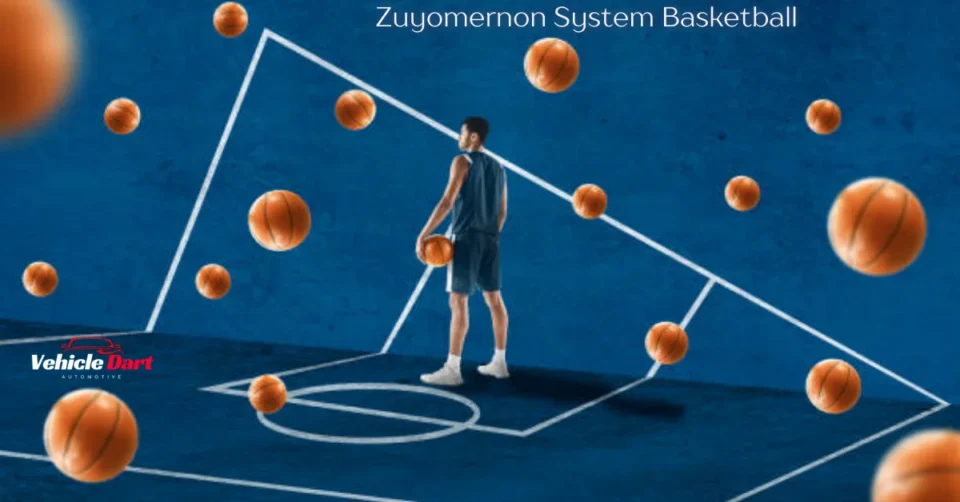Introduction to the Zuyomernon System Basketball
Welcome to the future of basketball, where traditional roles are being redefined and real-time strategies are taking center stage. The Zuyomernon System Basketball is not just another trend; it’s a revolutionary approach that challenges how teams operate on the court. Imagine a game where players adapt fluidly, showcasing their skills beyond conventional positions. This system emphasizes versatility and teamwork in ways never seen before, offering a fresh perspective on what it means to play basketball. Dive into this transformative world as we explore how the Zuyomernon System is reshaping team dynamics and elevating the game itself!
How Conventional Basketball Positions Shape Team Interactions?
Traditional basketball roles, like point guard, shooting guard, small forward, power forward, and center, create a familiar structure for teams. Each player understands their responsibilities and expectations based on these positions. However, this can lead to rigid dynamics.
When players become confined to specific roles, creativity often suffers. Players may hesitate to step outside their designated areas on the court. This limitation can stifle innovation in playmaking and strategy.
Moreover, traditional roles sometimes foster inter-player rivalries instead of collaboration. When one player is viewed as the primary scorer or playmaker, others might feel overshadowed or underutilized.
Communication also takes a hit within strict positional frameworks. Players may focus more on individual tasks rather than working together harmoniously toward shared goals. This fragmentation impacts overall team cohesion and performance during games.
How the Zuyomernon System Basketball Changes Traditional Roles?
The Zuyomernon System Basketball redefines player roles by emphasizing versatility and fluidity. Unlike traditional basketball, where players are often pigeonholed into specific positions, this system encourages athletes to adopt multiple roles on the court.
Players no longer simply focus on scoring or defending; they become multifaceted contributors. A point guard might find themselves rebounding while a center could initiate fast breaks. Flexibility on the court encourages imaginative plays and fresh strategies.
Moreover, it cultivates trust among teammates. Players learn to rely on each other’s strengths and cover weaknesses seamlessly. As a result, teamwork takes precedence over individual stats.
Coaches observe that with these dynamic shifts in roles, game strategies evolve rapidly. Each possession becomes an opportunity for spontaneous decision-making rather than rigid play execution. Unpredictability brings the thrill, marking a defining feature of the Zuyomernon System Basketball style.
Strategy and On-the-Spot Execution within the Zuyomernon System Basketball
The foundation of the Zuyomernon System Basketball rests on real-time gameplay. This approach emphasizes quick decision-making and fluid motions, allowing players to adapt on the fly. Each player becomes not just a position but an integral part of a dynamic offense.
Strategy in this system pivots around constant movement and communication. Players read each other’s actions, creating opportunities that traditional formations might miss. With every pass or cut, they engage in an ongoing dialogue—both verbal and non-verbal.
Teams utilizing this system often find themselves more cohesive as they learn to anticipate one another’s decisions. The emphasis on adaptability fosters creativity, enabling athletes to express their individual skills while contributing to collective success.
Moreover, real-time analytics can be integrated seamlessly into practices and games. Coaches can provide immediate feedback based on performance data, enhancing both strategy formulation and execution during live situations.
Inspiring Examples of Teams Thriving with the Zuyomernon System Basketball
Teams around the globe have embraced the Zuyomernon System basketball, experiencing remarkable transformations on and off the court. One standout example is a collegiate team that struggled with cohesion and consistency. After implementing this innovative system, their synergy improved dramatically. They went from being an average squad to clinching their conference championship.
Another inspiring case involved a youth league team. Adopting this strategy enabled young players to develop versatile skills quickly. The kids not only flourished individually but also learned how to collaborate effectively as a unit.
Professional teams have also taken notice of its potential. A European club utilized the Zuyomernon approach during playoffs, resulting in unprecedented teamwork and fluid play that led them straight to the finals after years of mediocrity.
These success stories illustrate how adapting roles can yield powerful results in competitive environments, breathing new life into traditional frameworks in sports.
Challenges and Criticisms of the Zuyomernon System Basketball
The Zuyomernon System Basketball, while innovative, is not without its challenges. Some critics argue that the fluidity of roles can lead to confusion on the court. Players who are accustomed to fixed positions may struggle to adapt, resulting in disjointed team play.
Additionally, coaching staff may find it difficult to implement this system effectively. Training sessions require a significant shift in focus and strategy, which can take time to master.
Another concern is the reliance on real-time decision-making. This approach demands high basketball IQ from all players involved. If athletes lack experience or confidence in making quick choices under pressure, it could hinder overall performance.
Traditionalists often voice their skepticism about abandoning established norms in favor of this evolving methodology. They emphasize that some structural elements of classic basketball shouldn’t be discarded entirely for newer concepts like the Zuyomernon System Basketball.
Conclusion: The Future of Basketball with the Zuyomernon System Basketball
The Zuyomernon System Basketball is paving a new path for the sport. By redefining player roles, it encourages adaptability and creativity on the court. Teams are no longer bound by traditional positions, allowing athletes to showcase their full potential.
As real-time strategies evolve, so does the game itself. Coaches who embrace this system report enhanced teamwork and communication among players. The freedom to roam and make split-second decisions can lead to dynamic plays that keep opponents guessing.
Success stories from various teams highlight how revolutionizing basketball through the Zuyomernon approach can yield impressive results. Yet challenges persist—some may find it difficult to adjust or face skepticism about abandoning conventional methods.
Despite these hurdles, interest in the Zuyomernon System Basketball continues to grow within communities passionate about innovation in sports. As more teams adopt this model, its impact will likely shape future generations of basketball players and fans alike.
With evolving methodologies like these at play, it’s exciting to consider where basketball might head next as we witness a blend of tradition with modernity—a true testament to growth and evolution in athletics.
A spark of curiosity can light worlds—continue with Vehicle DART.

